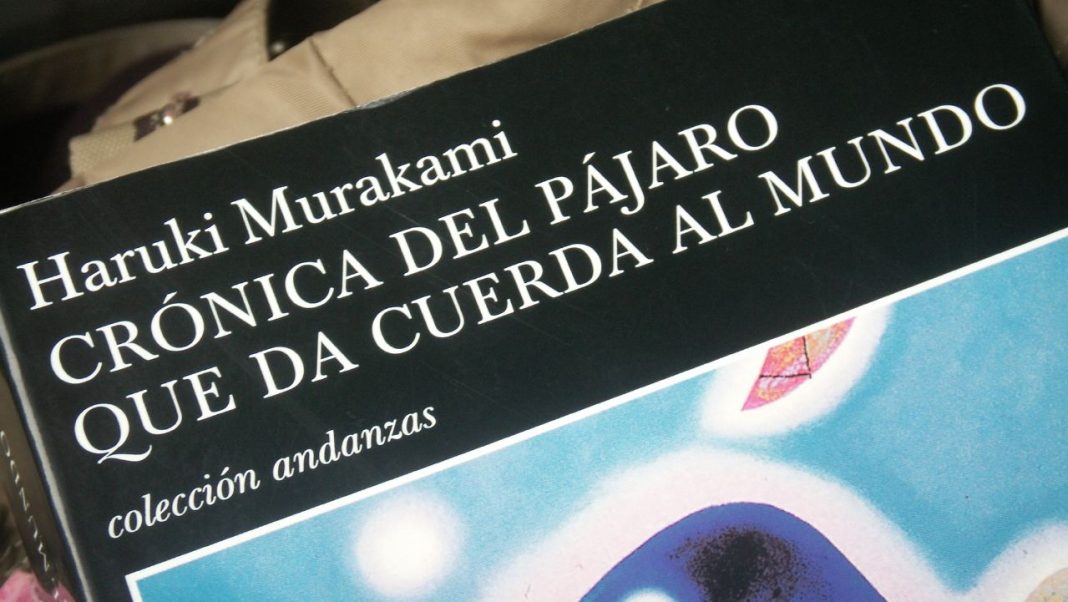As someone who is half Japanese, I’ve become accustomed to reading literature in different languages. Some books I’ve enjoyed so much that I’ve read them in both languages, such as Haruki Murakami’s Norwegian Wood. Contemporary Japanese authors like Murakami are often described as being quite dry and direct, with dialogue that sometimes translates awkwardly into English. And while I understand these criticisms of translations, I often feel the essence of the original novel is able to shine through despite these flaws.
Murakami’s writing style reflects his approach to the physical craft of writing. In his book Novelist As A Vocation, he mentions that with novels, there is a possibility that “the reader can be stifled if the screws are too tight”. Murakami leaves room for some passages to be long-winded, convoluted, even, to allow the other free-flowing passages to breathe. As a result, his writing style emerges like a sphygmomanometer, constantly constricting and then relaxing to make those “tightly restricted sections achieve their full effect”. This very feeling is crafted meticulously in their translated counterparts, thanks to the translators’ deep understanding of the source material. Take Scheherazade, translated by Ted Goossen, for example: about a man who is having an affair with an older woman. In between lengthy sections of mundane, almost unnatural sounding conversations about lampreys and breaking and entering, we read vivid details about the protagonist, from the way she undresses herself to the way her house is decorated. The awkward dialogue in all its glorified translated form works in creating a break between heavy sections of pure description.
However, not all translations are as fortunate – and it’s not entirely the translation’s fault. A few years ago, I read a book called Snakes and Earrings by Hitomi Kanehara, another Japanese author. I picked it up in English after seeing someone mention it on social media, piquing my curiosity due to its unconventional plot. The novel follows Rui (bizarrely named after Louis Vuitton), who develops a deep obsession in body modification after seeing her new gangster boyfriend’s split tongue. She embarks on a journey to also get her tongue split and subsequently begins a violent affair with a tattoo artist.
The book is incredibly short, just over 100 pages, and was extremely slow-paced until the last fifteen pages or so. Despite receiving literary awards and high praise, I felt Kanehara’s writing style was clunky, as though written by a teenager who had recently discovered smutty fanfiction. I wasn’t surprised to learn that Kanehara had indeed written it at sixteen, albeit with the guidance of her father, a sociology professor.
While the pacing of Snakes and Earrings felt inconsistent with its abrupt, unsatisfactory finale, this was perhaps not the fault of the translator, David Karashima. The novel did offer an interesting sociological insight into youth gang culture in Japan, but I felt let down by the literary limitations of Kanehara, who perhaps did not have the experience of the literary means to express her story in a truly impactful way. It certainly appealed to younger readers due to the simple language and shorter sentences, but of course, the subject matter felt potentially inappropriate for such an audience. Ultimately, I concluded that I may have resonated with the story more if the writing and pacing had been stronger.
Not trusting my initial judgement, however, I decided to give it another go in Japanese: could Kanehara redeem herself? Perhaps she was more articulate in Japanese and it was simply that the translator did not capture her work effectively, which was entirely possible. But how does one wrongly translate pacing? In the end, I faced similar problems whilst tackling the original, feeling that even with my slightly lacking Japanese reading skills, the plot may have been more exciting if written in a more captivating way.
Examining translated fiction highlights the pivotal role of a translator in engaging with an entirely new literary audience. The constant decision-making required throughout translation is crucial in determining how a book will be perceived by international readers whilst simultaneously maintaining the original tone and meaning. On a smaller scale, I’ve come to understand this myself while studying Italian. In translation, maintaining the integrity of the text while adapting certain elements to fit more naturally in the target language is key. However, it is not the translator’s job to manipulate the text into something it’s not. After a certain point, surely, we can no longer call it the same book. In the same way that Murakami’s directness is reflected in the work of his translators, I can admit that Kanehara’s English counterparts are also faithful to her craft. As much as I want to blame the translation, perhaps my problem lies with the original storytelling.
Now I understand that Snakes and Earrings in English indeed captures the heart and soul of the original, even if not up to my taste. At least it was an authentic reading experience, which perhaps means more than simply having a great book in your hands.


